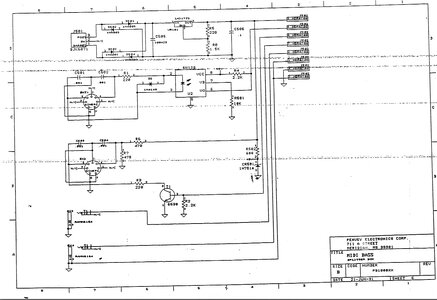@TieftonTom Danke für die Links. Hatte ich aber tatsächlich schon.Ohne das externe spezielle Peavy-Modul wird kein MIDI funktionieren.
Das ganze System ist (auch noch für die heutige Zeit) hoch komplex durch die zusätzliche Abnahme der Einzeltöne an den Bünden. Das E-Fach im Bass spricht ja Bände.
Das gepaart mit der Bedienerfreundlichkeit von 1993.
Die Manuals hast du wahrscheinlich schon entdeckt:
Selbst wenn alle Komponten vorhanden sind und funktionieren! ist das nicht plug- und play.
M.W. hat WAL damals das Patent von Peavy aufgekauft und auch in wenigen Bässen verbaut.
Konnte sich jedoch auch nicht durchsetzen.
Extrem aufwändig zum herstellen und sehr speziell zu spielen. Eher wie ein Keyboard.
Wenn alles vorhanden ist und geht =
Aber erwarte nicht zu viel. Das ist 35 Jahre alte "Computer"-Technik.
Ich hab die Verkäufer (Erben) kontaktiert, aber noch keine Rückmeldung.
Was mich irritiert: warum hatte der das Roland Midimodul und warum gab es später von Peavey dieses Adapter von 8 Pin auf 5 Pin (https://www.sweetwater.com/store/detail/AT200Cable--peavey-at200-midi-update-cable)?





